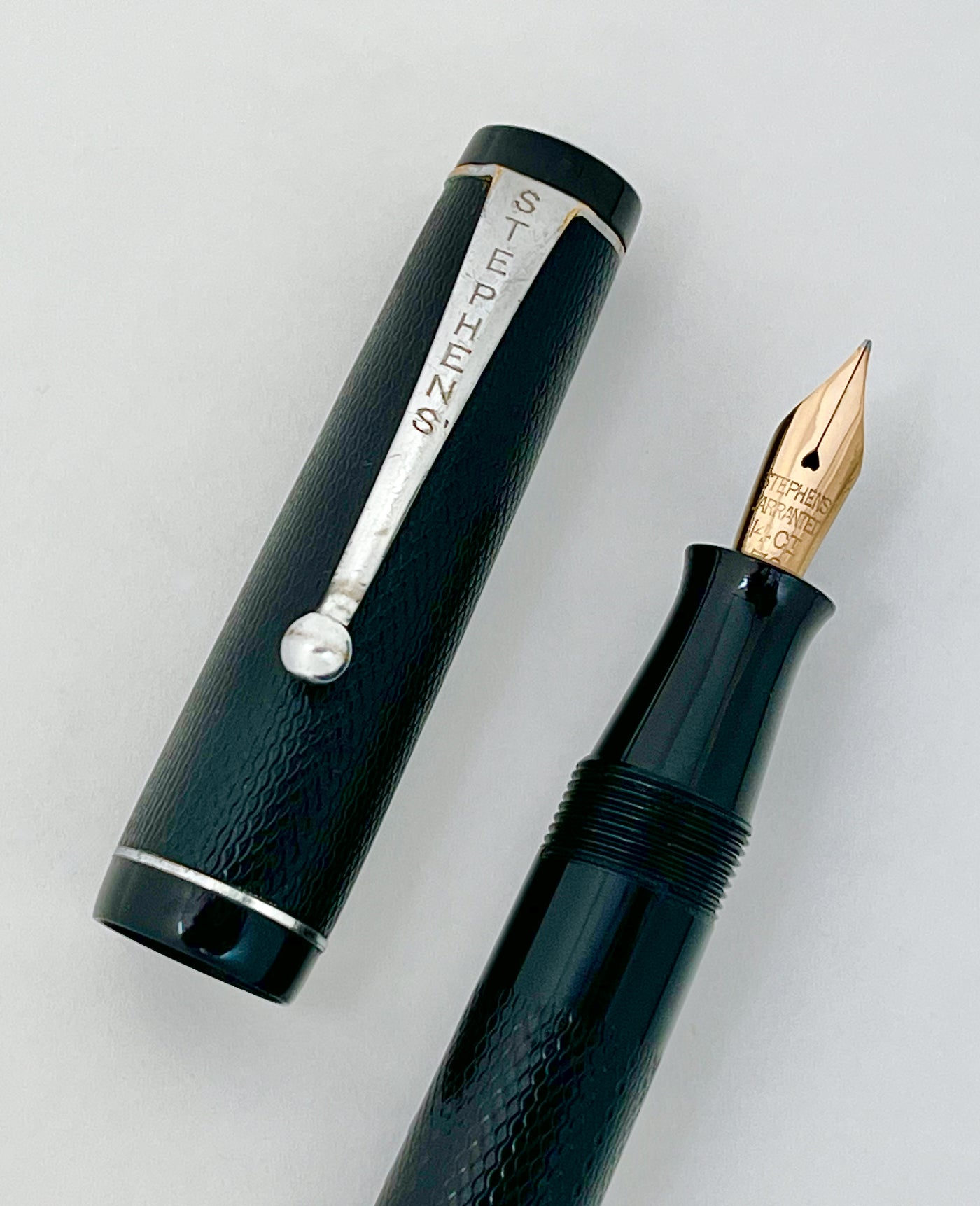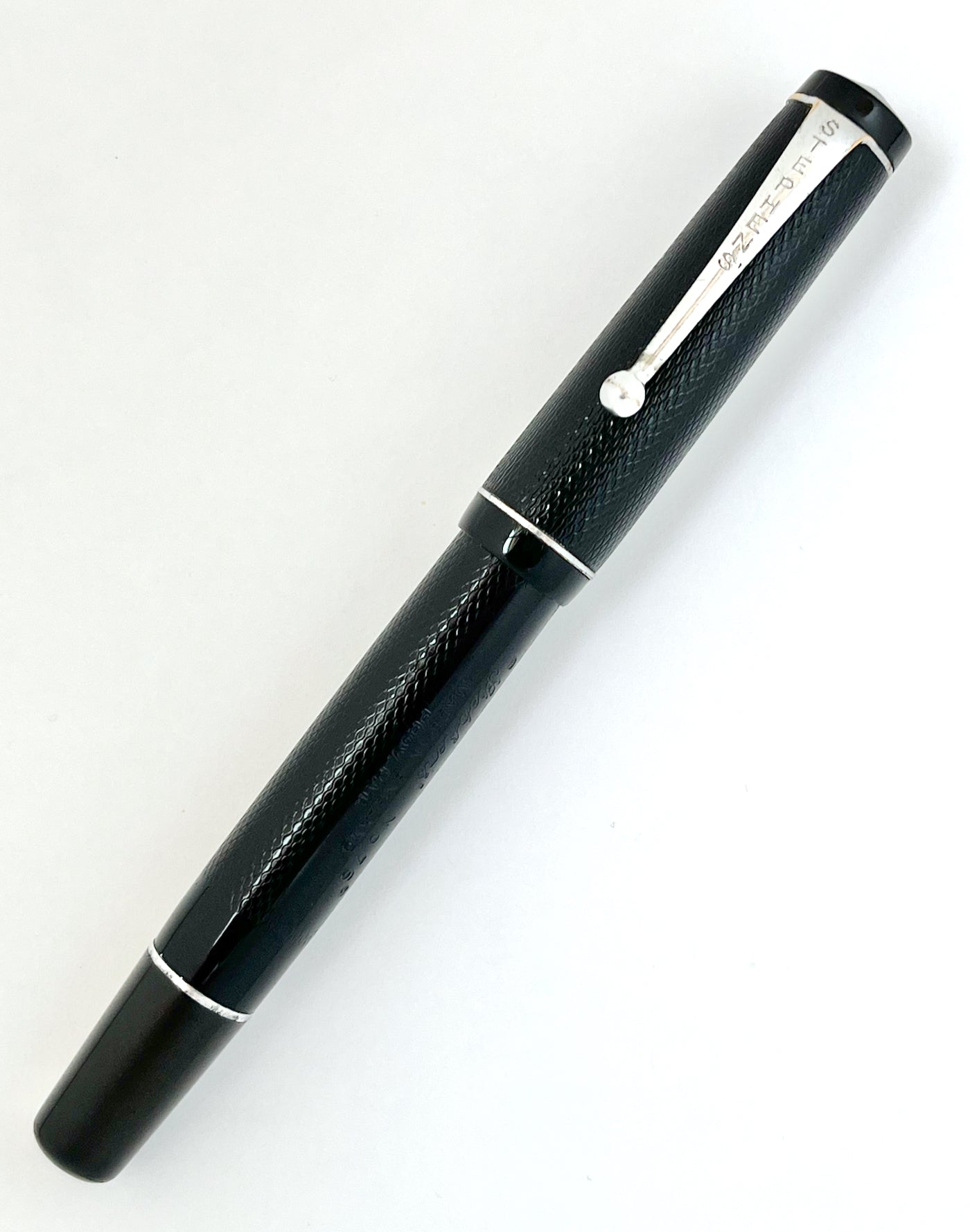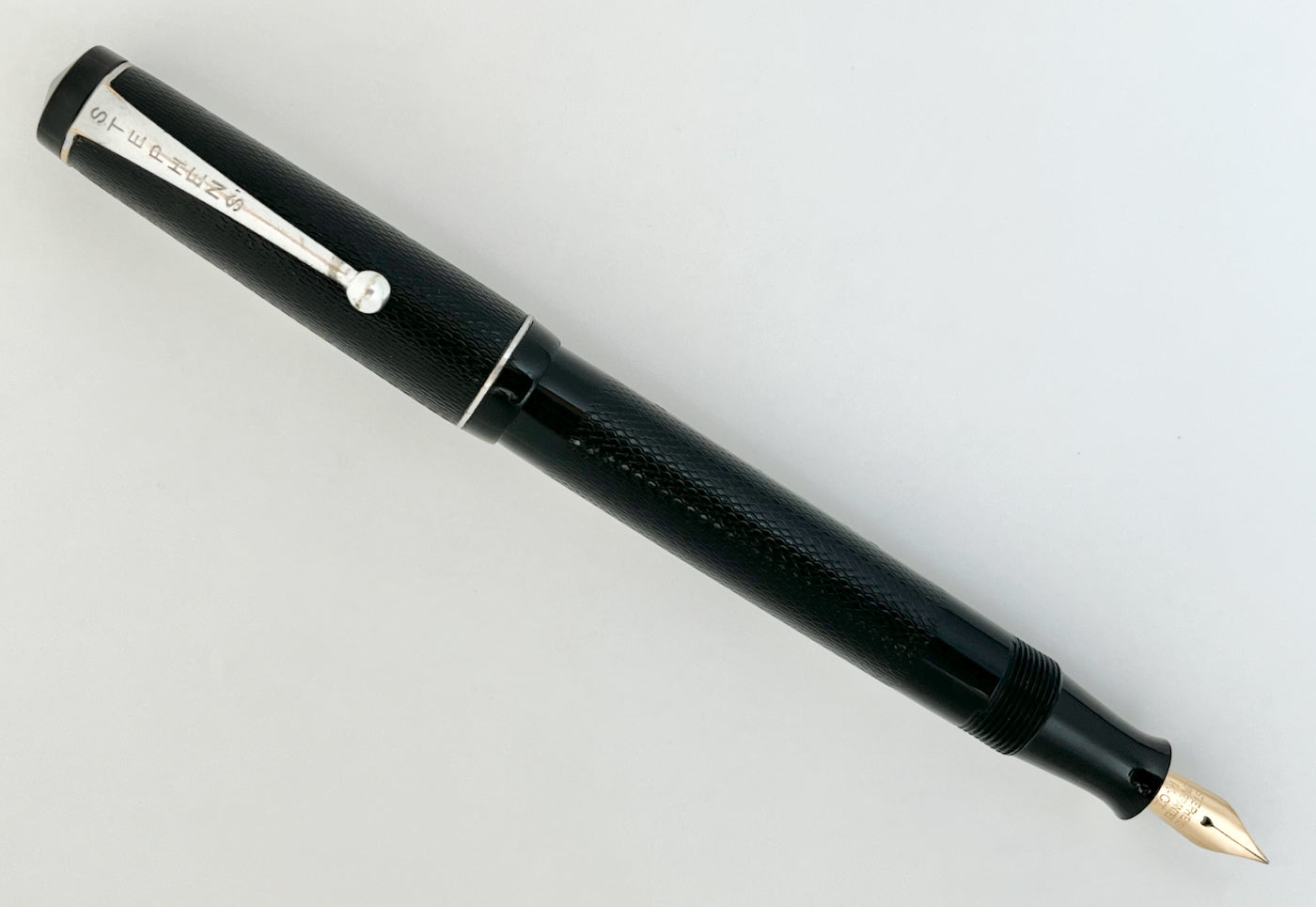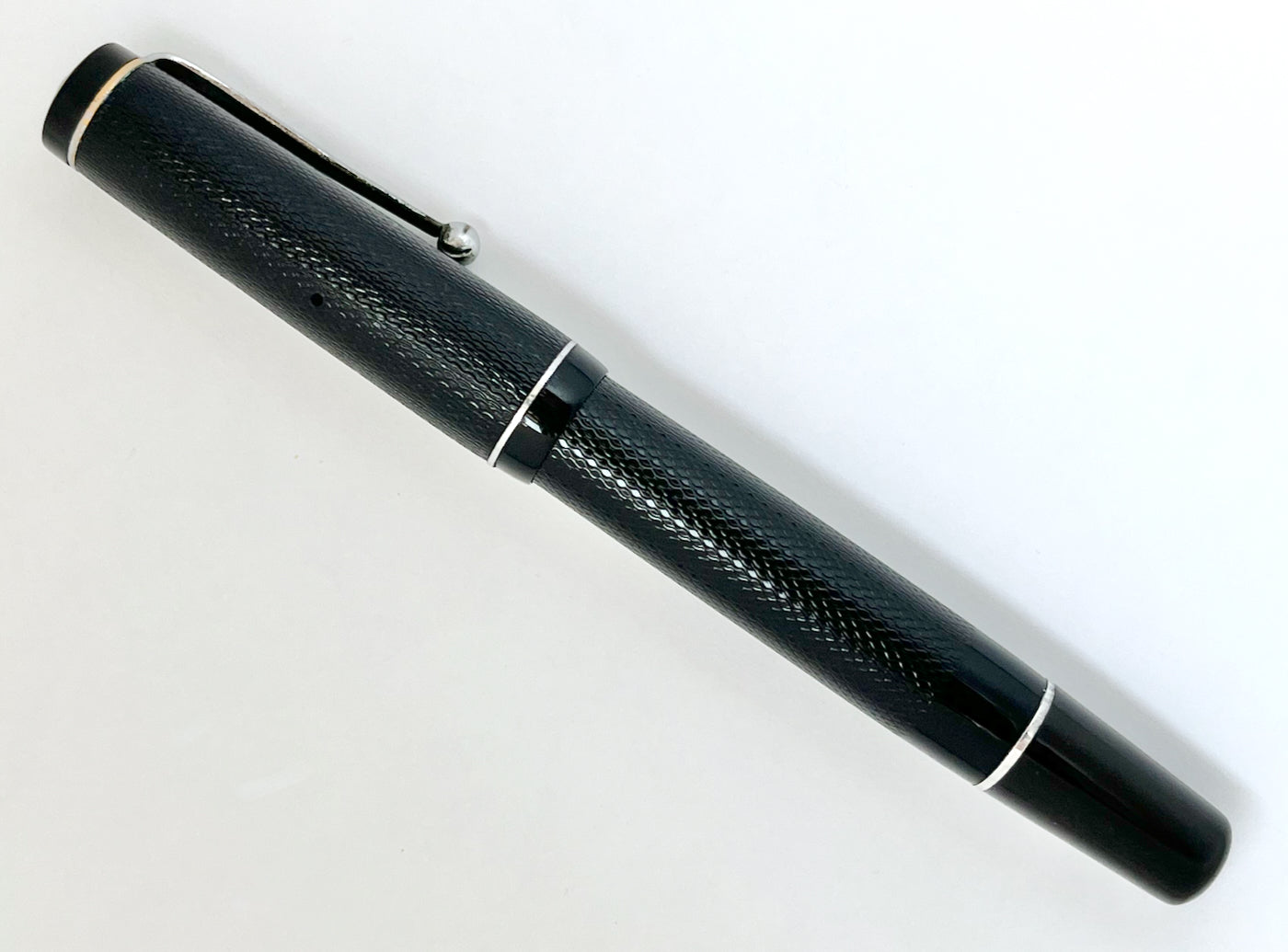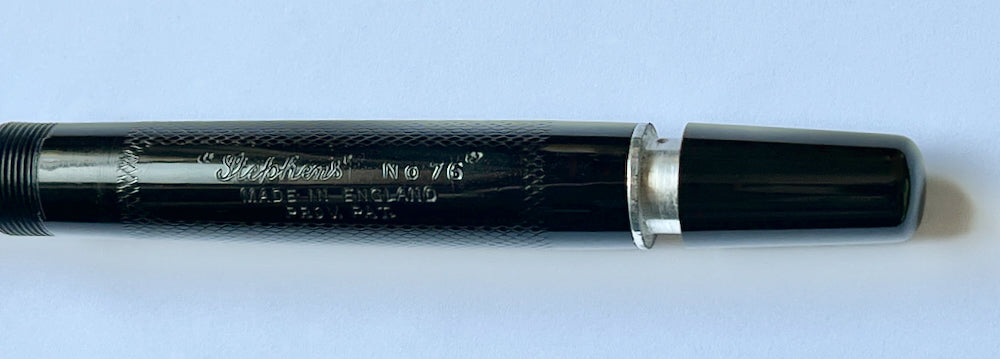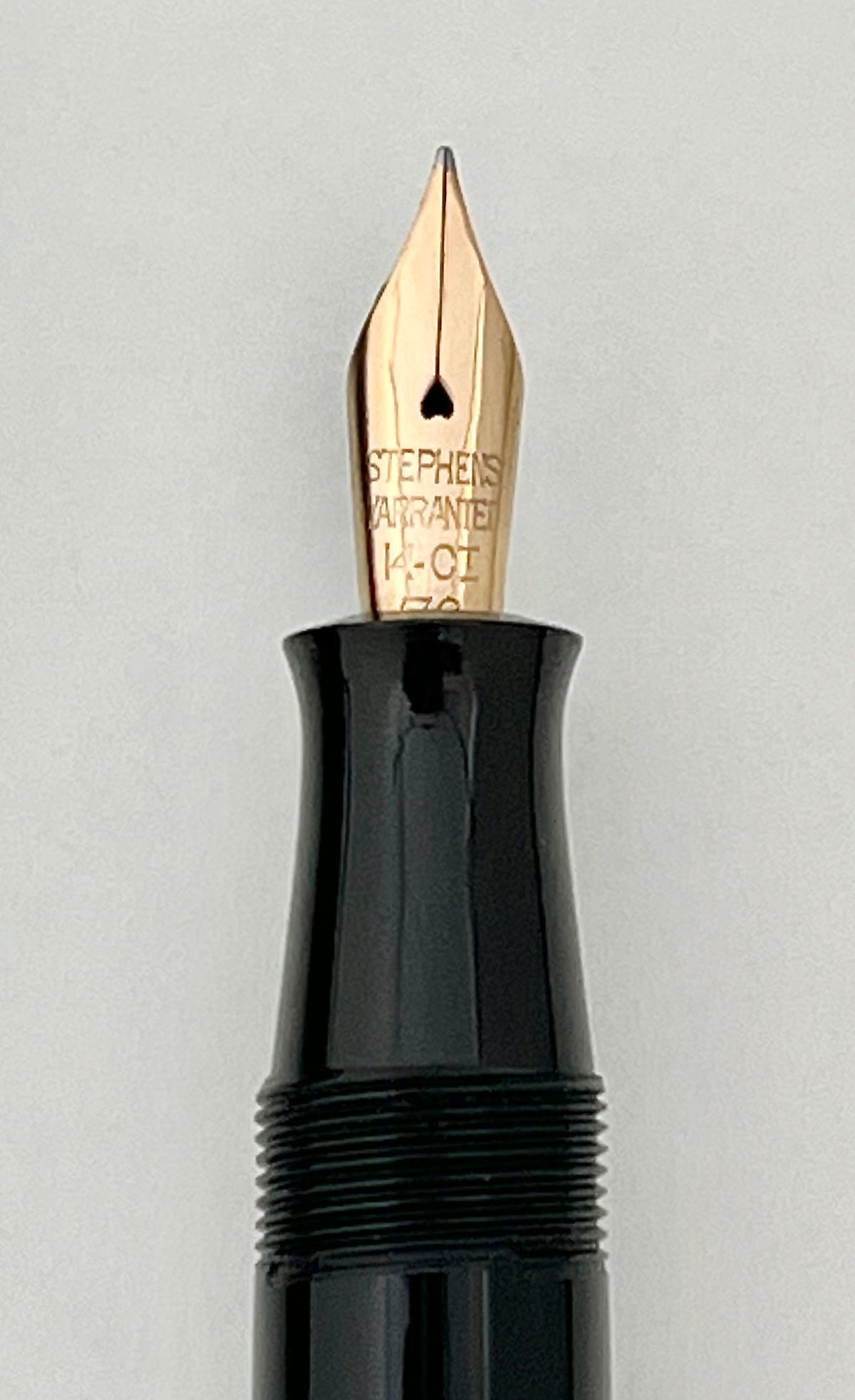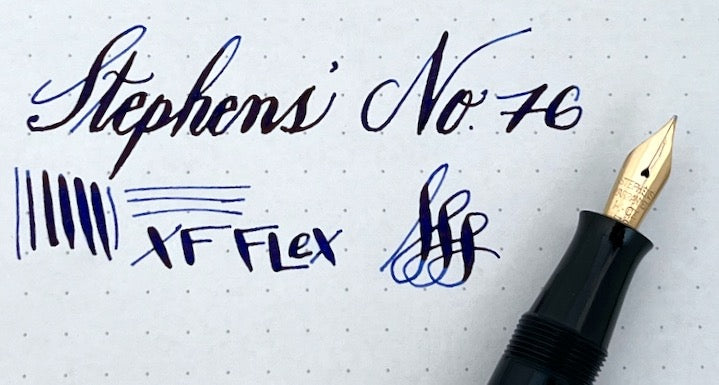Penchantment
1930s Stephens’ 76 Fountain Pen - FLEX
1930s Stephens’ 76 Fountain Pen - FLEX
Couldn't load pickup availability
Vintage: 1930s
Make: Stephens'
Model: 76
Color: Black chased
Materials: celluloid with stainless steel and nickel-plated trim
Filling System: Button filler (resacced and guaranteed to fill to factory capacity)
Length: This full-sized model measures 5” capped
Nib: Flexible 14k Stephens’ 76 nib lays down a smooth and consistent XF line that widens to a 3B++ (approx 1.9mm) under moderate pressure
Condition: Nickel-plated trim is clean aside from a horizontal scratch around 1/4 of the thin cap band and a couple small spots of wear on the clip and clip tassie. Aside from that this pen resembles a relic recovered from a time capsule. Celluloid has a smooth, lustrous surface with factory deep chasing and no deep scratches or other notable blemishes – scarcely even any microscratches. Hard rubber parts are factory black. Manufacturer imprint on barrel is factory deep and fully legible.
Details: Stephens' was a British maker renowned for manufacturing ink since middle of 19th century. It's speculated that Stephens pens were manufactured by Lang, makers of Summit and Savoy pens (among others). The company entered the fountain pen market in the 1930s with its innovative twist on the conventional button filler. Instead of having a removable blind cap with a button underneath, a Stephens button filler has a non-removable blindcap that functions as a button when it's partially unscrewed from the back of the barrel. Despite their relative obscurity compared to the likes of Mabie Todd and Conway Stewart, Stephens' pens are extremely well crafted; I would even say their construction is of *higher* quality than that the lion's share of their competitors'. Owing to the solid stainless steel used in the filler and thick celluloid used, these pens have a substantial heft in the hand – heavier than similarly sized Mabie Todds or Conway Stewarts. And they have no less than six sets of threads in their design. The 76 was Stephens’ bestselling model, situated between the more modest 56 and deluxe models such as the 106, which is all but indistinguishable from the 76 apart from its gold-plated trim and slightly larger nib.
